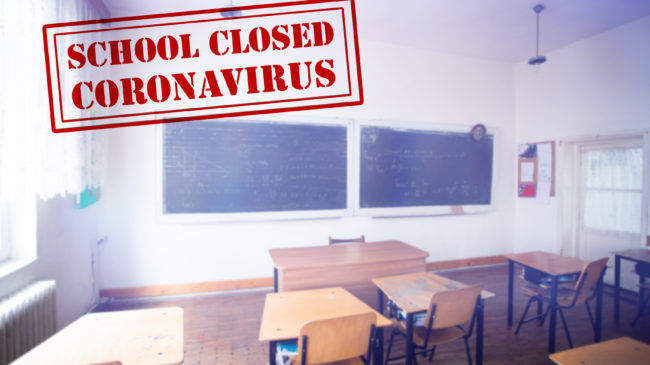It’s back-to-school season, but millions of students won’t be going back to the classroom. Some teachers are fighting tooth and nail to prevent reopening public schools for in-person learning in the name of safety. Yet, our just-released study suggests that these reopening decisions have more to do with influence from teachers’ unions than safety concerns.
In New York City, the Department of Education’s proposal to offer families a hybrid of part-time in-person instruction and remote learning starting Sept. 10 met with fierce opposition. Teachers’ groups poured into the streets to protest the plan, including with props such as fake body bags. Mayor de Blasio pushed back the opening after threatened strikes.
It’s happening nationwide. New data published at Education Week indicate that 78 percent of the nation’s 50 largest public districts aren’t planning to reopen with any in-person instruction.
Using data on the reopening decisions of 835 public districts covering about 38 percent of all students enrolled in K-12 public schools in the country, our study finds that school districts in places with stronger teachers’ unions are much less likely to offer full-time, in-person instruction this fall.
For example, our models indicate that school districts in states without right-to-work laws are 14 percentage points less likely to reopen in person than those in states with such laws, which prevent unions from requiring membership.
A 10 percent increase in union power is associated with a 1.3 percentage-point lower probability of reopening in person. In Florida, for example, 79 percent of 38 school districts in the Education Week dataset are planning to offer full-time in-person instruction to all students. However, in New York, a state with much stronger teachers’ unions, none of the 21 school districts included in the dataset are planning to do the same.
We also find that a one percentage point increase in union membership at the state level is associated with a 1.5 percentage point lower probability of reopening in person. Then, too, a 10 percent rise in union workers at the county level is associated with around a one percentage point decline in the probability of reopening in person in the fall.
These results are remarkably consistent across various analytic models and even after controlling for differences in county demographics, including age, gender, marital status, race, population, education, political affiliation, household income, and COVID-19 cases and deaths per capita.
By contrast, reopening decisions are unrelated to COVID-19 risk as measured by recent cases per capita and deaths per capita in the county. That is also consistent with recent evidence that the biggest factor in what people believe about the pandemic is political affiliation — not COVID-19 risk or even demographic factors, such as age and race.
None of this means that teachers’ unions have bad intentions. Pushing against reopening schools in person could make sense from a cost-benefit analysis if it minimizes health risks for union members while maintaining about the same level of benefits in terms of job security and wages. In fact, virtual instruction can mean more benefits for union members: It can reduce their child-care responsibilities, hours of direct instruction and commute times.
The problem is that teachers aren’t the only stakeholders in the reopening debate. Keeping schools closed hurts families that need in-person options. Plus, remote learning provided by public districts may turn out to be a disaster for many students already falling behind.
A better solution: Governments should fund students directly, so they can take their education dollars to the schools of their choice. After all, education funding is supposed to be for educating students, not protecting traditional public schools when other options are available. School districts have the power to choose their own reopening plans. Let’s give families a choice, too.
This piece is co-authored by Christos A. Makridis, an assistant research professor at Arizona State University and a senior adviser at Gallup.
A version of this column first appeared in the New York Post.

